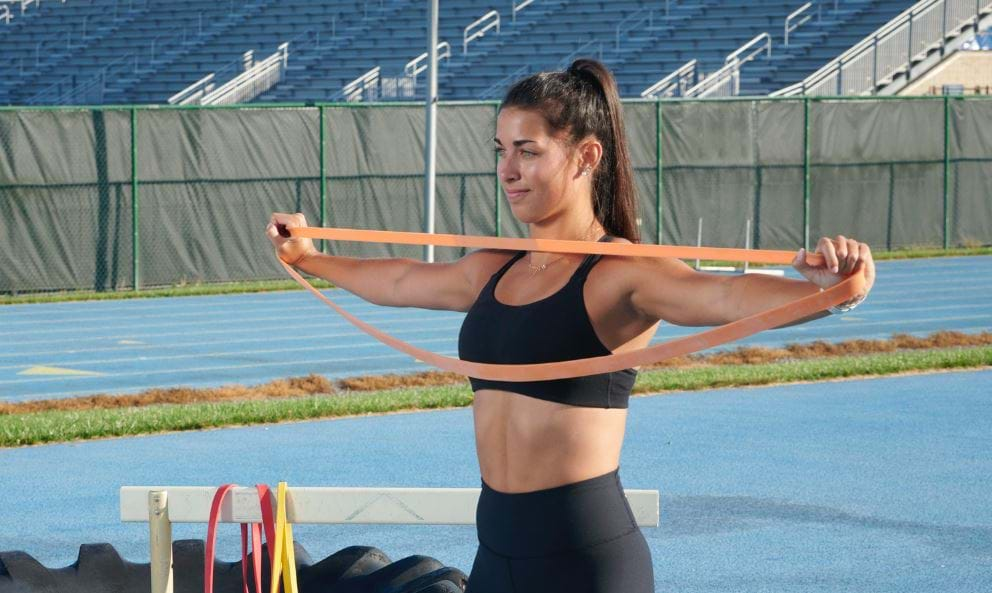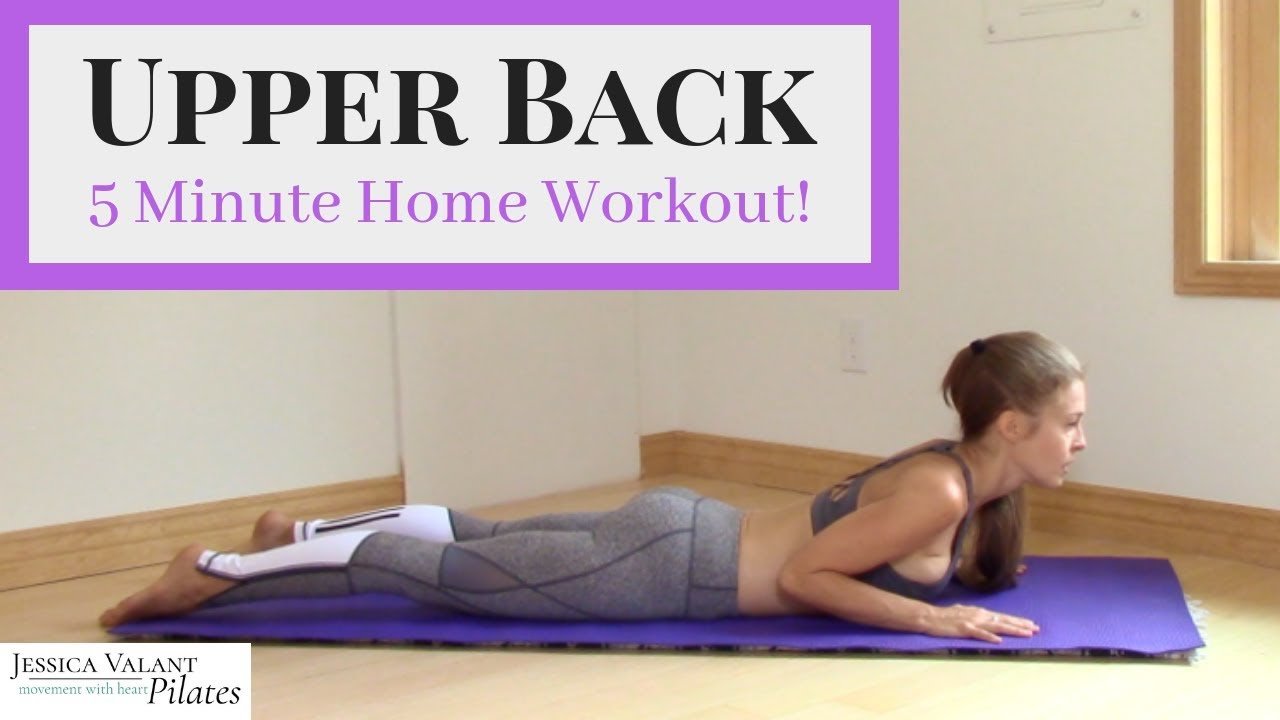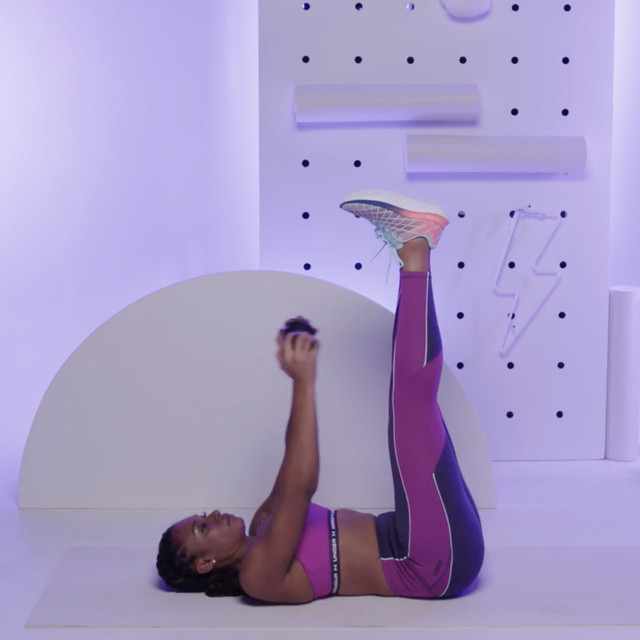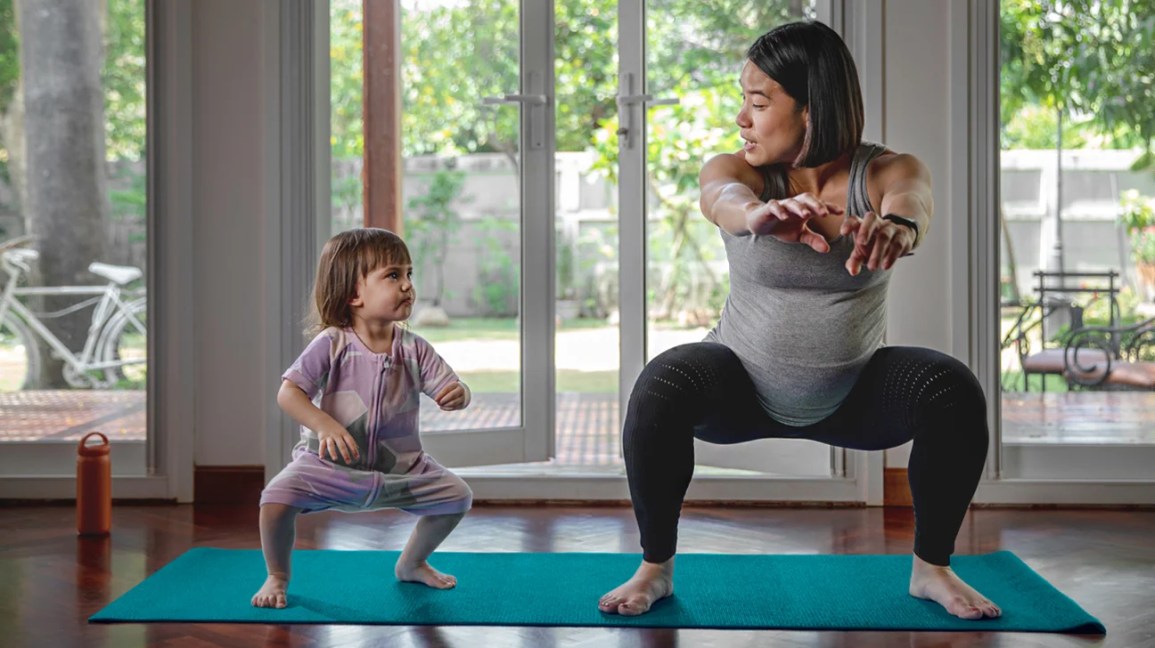Beginner back exercises enhance posture and reduce pain. Start with simple stretches and strength-building moves.
Exercising your back is crucial when embarking on a fitness journey, as a strong back supports overall posture and helps prevent lower back pain, a common ailment for many. As a beginner, it’s essential to focus on form and control to build a solid foundation.
Incorporating back exercises into your routine can lead to significant improvements in stability and functional strength. Whether you’re aiming to fortify your back for daily activities or improve your performance in sports, starting with the basics is key. These exercises can range from straightforward stretches that loosen up your spine to beginner-friendly strength moves like dumbbell rows and bird dogs. Not only do they pave the way to a more robust frame, but they also serve as a stepping stone towards more complex workouts. With consistent practice, these initial steps can lead to a resilient and flexible back, essential for a well-rounded fitness regimen.
Starting Your Back Fitness Journey
Embarking on a back fitness journey marks the start of building a stronger, healthier body. Focus on exercises that target the complex muscles of your back. A solid routine enhances posture, reduces pain, and boosts overall strength. Let’s dive into why a strong back matters and tips to keep workouts safe and effective.
Importance Of Strong Back Muscles
Rock-solid back muscles serve more than one purpose. They are the backbone of daily movement. These muscles work for walks, lifts, sits, and bends. All-day, every day, they are in action. Strong back muscles:
- Improve posture.
- Decrease injury risks
- Bear everyday tasks with ease.
It is not just about looks; it is about health and quality of life.
Safety Tips For Beginners
Jumping into back exercises? Keep these tips top of mind:
- Warm up to prep muscles.
- Start slow, build intensity gradually.
- Maintain proper form to prevent injury.
- Use suitable weights, not too heavy.
- Rest between workouts for recovery.
Remember, safety ensures a smooth and successful back fitness journey!
Essential Equipment For Home Workouts
Let’s talk about starting back exercises at home! You need the right gear. Do not worry. Their cost won’t drain your pockets.
Choosing The Right Mat
Your mat should be comfortable and non-slip. It makes your workout safe and enjoyable. List of must-haves:
- Thickness: A thick mat protects your back.
- Material: Look for durable eco-friendly options.
- Size: Your height should fit on the mat with ease.
Inexpensive Tools For Resistance
To build muscle, you need resistance tools. Think affordable, not cheap in quality. Tools to consider:
| Tool | Use | Benefit |
|---|---|---|
| Resistance Bands | Various back exercises | Improve strength gradually |
| Dumbbells | Weighted rows and lifts | Enhance muscle tone |
| Kettlebells | Swings and deadlifts | Boost overall endurance |
Warm-up Routines To Prevent Injury
Jumping into back exercises without a proper warm-up invites risks. Warm-up routines prime your back, ensuring safety and enhancing performance.
Dynamic Stretching Basics
Dynamic stretches wake up muscles with movement. They get the blood flowing and prepare your body for action.
- Arm circles: stretch your shoulders and warm-up joints.
- Leg swings: loosen the lower back and pelvis area.
- Walking lunges: activate the full range of leg to back muscles.
Perform each stretch in sets of 10-15 to ensure your muscles are ready.
Activating The Back Muscles
Specific moves help target the back before intense workouts.
- Cat-Cow Pose: Offers spine flexibility and strengthens the back.
- Superman Hold: Engages the upper and lower back equally.
- Child’s Pose: Relieves tension and aligns the spine.
Repeat each for 30 seconds to invigorate back muscles safely.

Credit: www.spotebi.com
Core Back Exercises For Beginners
Starting a back exercise routine can boost strength and improve posture. Beginners need simple, effective moves. They lay the foundation for a stronger back. Let’s look at core back exercises perfect for those starting out.
The Classic Superman
The Superman exercise works your entire back. Lie face down. Stretch your arms in front. Raise arms and legs together. Hold for a few seconds. This mimics the flying superhero. It’s great for back strength.
- Lie on your stomach
- Extend arms and legs
- Lift and hold for 3-5 seconds
- Repeat 10 times
Bridges For Lower Back
Bridges target the lower back muscles. Lie on your back with knees bent. Feet should be flat on the floor. Lift your hips. Create a straight line from knees to shoulders. Hold then lower back down gently.
Resistance Band Rows
Rows with a resistance band help build a strong mid-back. Sit on the floor with legs extended. Loop the band around your feet. Pull the band towards your waist. Keep your back straight. This mimics rowing a boat.
Dumbbell Shrugs For Trap Engagement
To activate the upper back, especially traps, do dumbbell shrugs. Stand with weights on each side. Lift shoulders up towards your ears. Hold. Release slowly. Keep arms straight. Repeat this shoulder grazing move.
Building A Beginner Workout Plan
Starting a workout plan can be a game-changer for your health. Building a Beginner Workout Plan needs simple steps for big gains. The aim is to get strong and healthy, not just lift heavy weights.
Structuring Your Routine
Create a balanced routine to work all muscle groups. Your back is key for posture and power. Below is a sample back workout structure for beginners:
- Warm-up – 5-10 mins of light cardio.
- Main workout – Focus on back exercises, 3-4 types.
- Cool down – Stretch to boost flexibility and recovery.
Frequency And Repetitions
Know how often to train and how many reps to do. Be clear on these to grow muscles safely.
| Days Per Week | Reps Per Exercise | Sets Per Exercise |
|---|---|---|
| 2-3 | 8-12 | 2-3 |
Stick with this plan for consistency. Chart your progress to stay on track. Rest is also key.
Progress Tracking And Setting Goals
As you start on your journey to a stronger back, tracking progress and setting goals is key. This process helps you stay motivated and see the results of your hard work. Without measuring improvements, it’s tough to know if your workouts are effective. Let’s explore how to track strength gains and decide when to level up your routine.
Measuring Strength Gains
Knowing if you’re getting stronger involves regular check-ups on your performance. Start by jotting down the number of reps, sets, and weights used in each session. Use a simple table to see your progress over time.
| Exercise | Sets | Reps | Weight | Date |
|---|---|---|---|---|
| Deadlift | 3 | 12 | 20lbs | 04/01/2023 |
Watch for consistent improvements in these numbers over weeks. This is a clear sign of strength gains.
When To Increase Intensity
It’s vital to get the timing right for upping the ante. Look out for signs that it’s time for more challenge. These signs include:
- Completing your sets with ease
- Feeling less challenged by your current weight
When you hit these milestones, consider:
- Increase the weight slightly, by 5 to 10 pounds.
- Add another set to your routine.
- Include more complex movements.
Remember to do this gradually to avoid any injuries. Always listen to your body and allow for recovery time.
Supplementary Exercises And Tips
Building a strong back is just part of your fitness journey. Supplementary exercises and tips will enhance your routine. They assure well-rounded strength. Consistency is key, along with a mix of activities. Let’s dive into some ways you can boost your back workouts and overall health.
Incorporating Cardio For Fat Loss
Cardio burns calories and helps shed fat. A leaner frame makes muscle definition pop. Here are some cardio activities to mix into your routine:
- Brisk walking or jogging
- Cycling indoors or on trails
- Swimming for low-impact full-body workouts
Cardio sessions can be done on non-lifting days. Aim for 20 to 30 minutes. Start slow, and increase the intensity as you progress.
Balancing Exercises: Beyond The Back
A strong back requires a balanced body. Focus on these areas too:
| Muscle Group | Exercises |
|---|---|
| Core | Planks, bird-dogs, crunches |
| Legs | Squats, lunges, deadlifts |
| Shoulders | Presses, lateral raises, reverse flyes |
Include these exercises in your back days or on separate days. Well-rounded fitness routines improve posture. They also reduce injury risk. A good balance will make your back stronger.
:max_bytes(150000):strip_icc()/8-At-Home-Back-Exercises-for-a-Stronger-Upper-Body-GettyImages-855025910-2000-bd327f7b71844212a522d2f0168f64f6.jpg)
Credit: www.shape.com
Nutrition For Muscle Growth And Recovery
Nutrition plays a vital role in building muscle and recovering after a workout. For beginners focusing on back exercises, the right food can help muscles grow stronger and recover faster. Understanding what to eat can be as important as the workout itself. Let’s explore the key nutritional components that support muscle growth and recovery.
Protein-rich Foods To Consider
Proteins are the building blocks of muscle. They help repair the tiny tears that occur in muscle fibers during a workout. These foods are packed with proteins and should be a part of your diet:
- Chicken breast: A lean source of protein.
- Salmon: Rich in protein and omega-3 fatty acids.
- Beans and legumes: Great for vegetarians and provide fiber too.
- Eggs: Contain all the essential amino acids.
- Greek yogurt: Double the protein count of regular yogurt.
Hydration And Muscle Performance
Drinking enough water is crucial for muscle function. Here’s how it helps:
| Function | Effect on Muscles |
|---|---|
| Transports Nutrients | Delivers protein to muscles |
| Maintains Temperature | Prevents overheating during workouts |
| Lubricates Joints | Reduces risk of injury and strain |
Aim for at least 8 glasses of water a day more if you exercise intensely.
Understanding Posture And Back Health
Healthy back starts with good posture. Understanding how to improve posture can lead to less pain. Simple exercises help build a strong, supportive back.
The Relationship Between Posture And Pain
Standing or sitting in the right way can prevent back pain. The spine’s natural curve should be maintained. Slouching adds stress to muscles and ligaments. Correct posture aligns everything, reducing discomfort.
Key components of good posture:
- Ears aligned with shoulders
- Shoulders rolled back
- Abdominal muscles engaged
- Spine in a neutral position
- Feet flat on the floor
Exercises To Improve Posture
A mix of stretches and strength training can transform posture. Gentle movements are a good start. As strength builds, more advanced exercises can be introduced.
Beginner back exercises for better posture:
| Exercise | Description | Reps |
|---|---|---|
| Shoulder Blade Squeeze | Sit up straight and squeeze shoulder blades together. | 10 |
| Wall Angels | Stand against a wall, move arms up and down like snow angels. | 10 |
| Prone Extensions | Lie on your stomach, lift chest slightly off the ground. | 10 |
| Bridges | Lie on your back, feet flat, lift hips up and down. | 10 |
Incorporate these exercises into a daily routine for best results. Consistency leads to stronger muscles and better posture. This equates to less pain and improved overall health.
Staying Motivated And Consistent
Embarking on a journey to a stronger back is thrilling. Yet, it’s easy to lose steam. The secret sauce? Motivation and consistency. This blend propels anyone towards their fitness goals. Stick through thick and thin, and watch your back grow stronger day by day.
Tracking Progress Visually
Visual records are powerful motivators. They’re like snapshots of your journey. Grab that camera or create a progress log in a notebook. Here’s how:
- Take weekly photos in the same stance for comparison.
- Chart your workout intensity or the weights you lift.
- Use apps to log workouts and visualize progress over time.
Joining Online Communities
Online communities can be gold mines of support. Here’s why they work:
- Accountability – Share accomplishments and struggles.
- Motivation – Celebrate each other’s successes.
- Advice and Tips – Learn from those a step ahead.
Find groups on social media or fitness forums.
Setting Achievable Milestones
Long-term goals can feel daunting. Break them into smaller milestones. Here’s a simple guide:
- Start small – Aim for consistent, short workouts first.
- Incremental increases – Add reps or weight gradually.
- Celebrate little victories – Reward every milestone to fuel your drive.

Credit: www.puregym.com
Frequently Asked Questions Of Beginner Back Exercises
How Do You Train Back For Beginners?
Begin training your back with basic exercises like lat pulldowns, rows, and back extensions. Start with light weights to focus on form and prevent injury. Gradually increase weight as you grow stronger, engaging your core for stability during each workout.
What Back Exercise Should I Do First?
Begin your back workout with deadlifts to target multiple muscle regions and activate overall back strength.
How Do You Hit Back For Beginners?
To hit back in tennis as a beginner, stand with feet shoulder-width apart. Grip your racquet properly in your dominant hand. Keep your eyes on the ball and swing the racquet back. Then step forward, swing your racquet through the ball, and follow through with your stroke.
How Do I Start Back Exercises?
Start back exercises by consulting a healthcare professional. Begin with warm-up stretches to prevent injury. Choose low-impact exercises to ease into your routine. Focus on consistency and proper form. Gradually increase intensity as your strength improves.
Conclusion
Embarking on a journey to strengthen your back is a smart move for long-term health. The exercises we’ve outlined are perfect for beginners, aiming to build muscle and improve posture. Remember, consistency is key. Start slow and stay dedicated. Your back will thank you for the effort you put in today.


